fall inside a hole
Basic No. 3 Set (1977)
First written August 29, 2023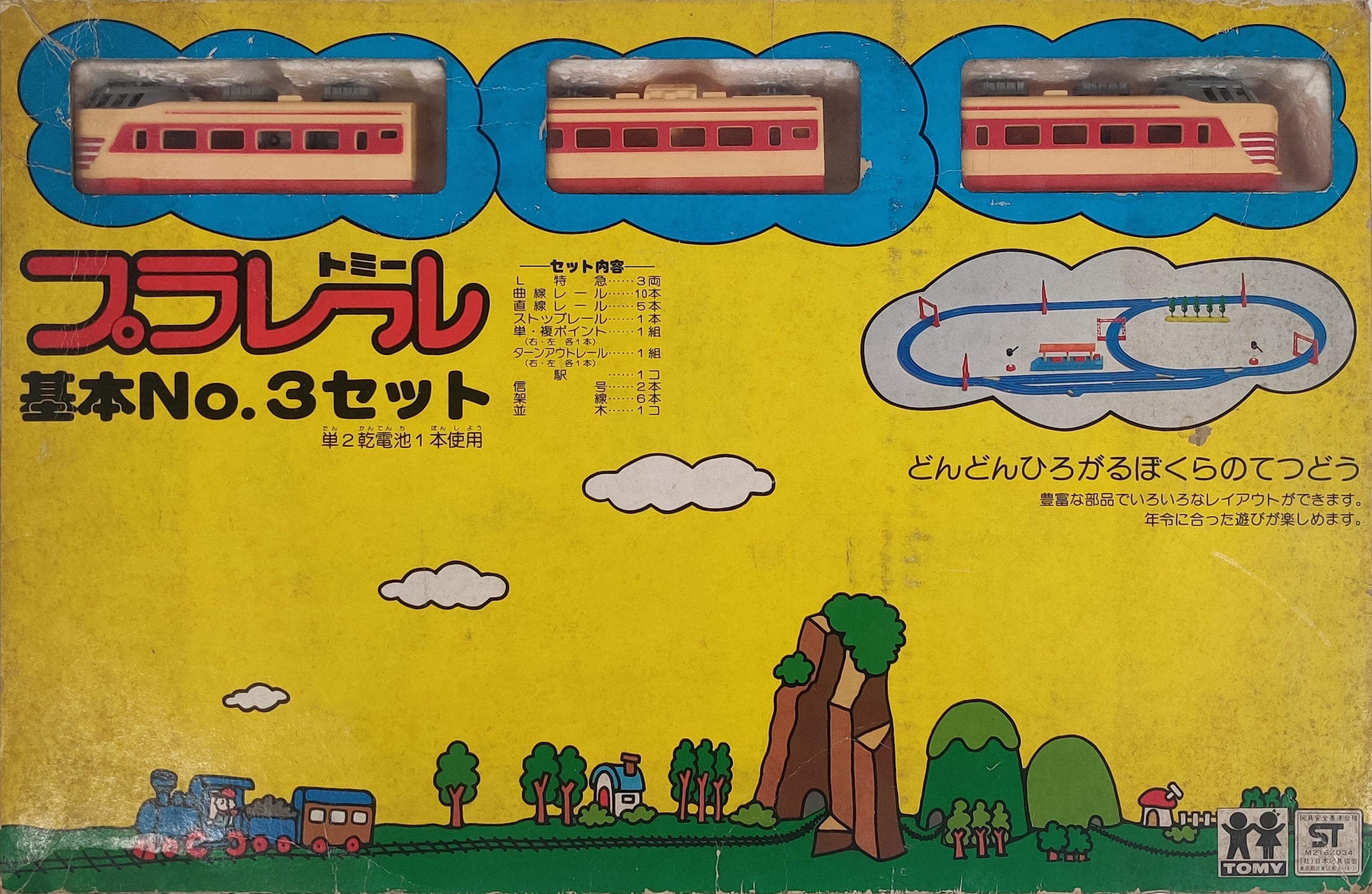
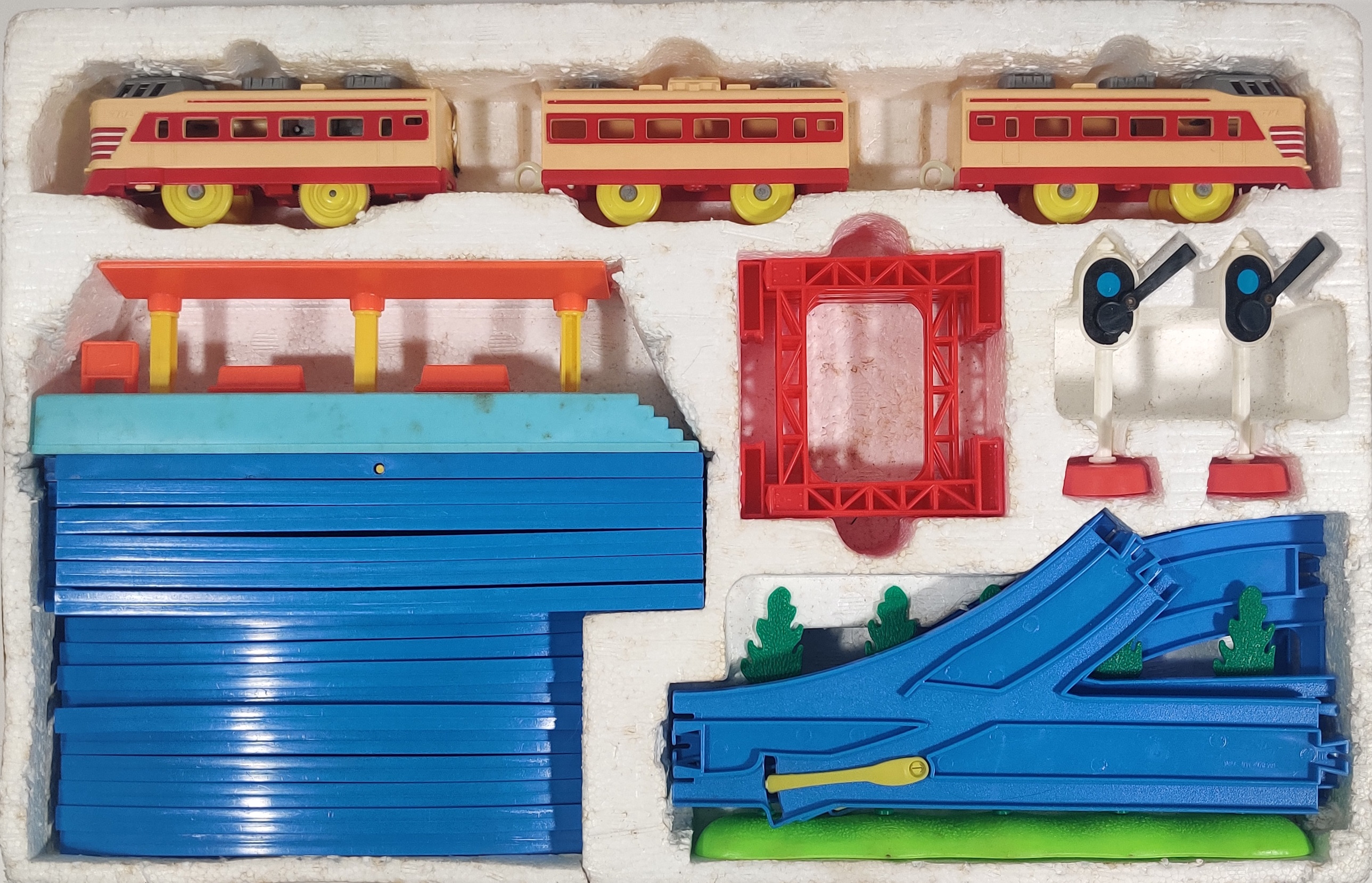
The Basic No.3 Set (基本No.3 セット) was a basic set released in 1977 featuring an L Limited Express train with metal rim-drive gearbox and a nice layout with a passing loop and two-line station. Accessories include a common commuter station of the era, two signals, and a row of trees. The G-26 mark on the box means this example was printed in 1977.



The top and bottom of the box shows some ideas for how to expand the set, in particular using some track packs of the time like the Double Rail Parts Set. I also own a slightly later (circa 1980) copy of this set loose, which has a few minor differences discussed below.
Set contents| Quantity |
Item |
Photo |
|---|---|---|
| 3 pieces | L Limited Express (old power metal gearbox) |
 |
| 5 | R-01 Straight Rail (roughtop with Japan markings) |
 |
| 10 | R-03 Curve Rail (roughtop with Japan markings) |
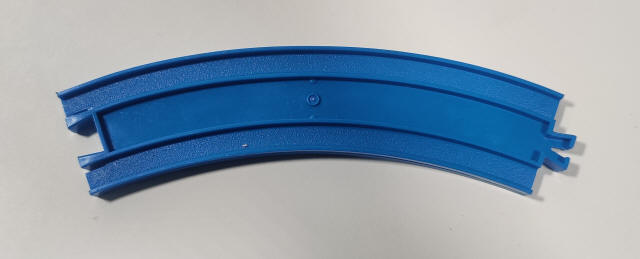 |
| 1 | R-08 Stop Rail (smooth with Japan markings) |
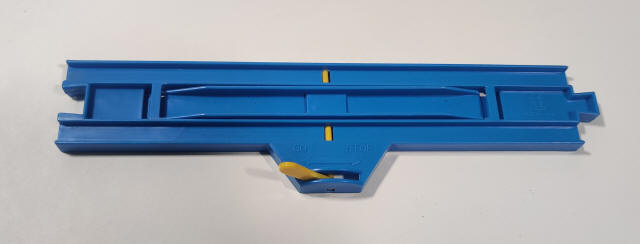 |
| 2 pieces | R-11 Turnout Rail (one pair) (roughtop with Japan markings) |
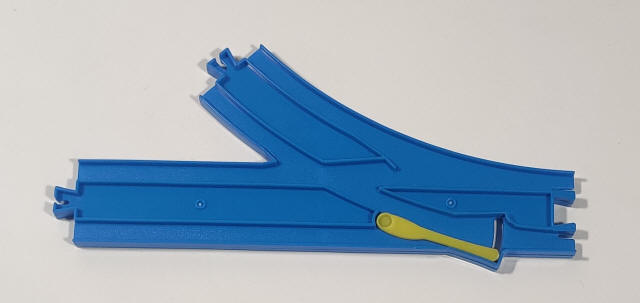 |
| 2 pieces | R-13 Single/Double Point Rail (one pair) (roughtop with no markings) |
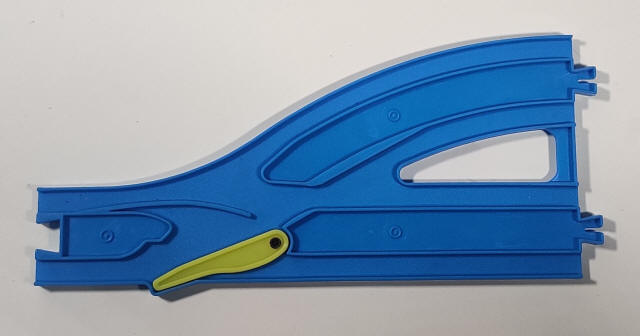 |
| 1 | Station Platform |
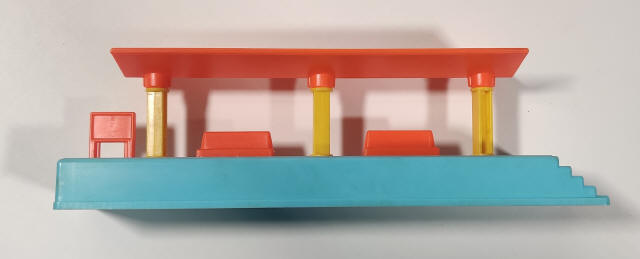 |
| 2 | Signal |
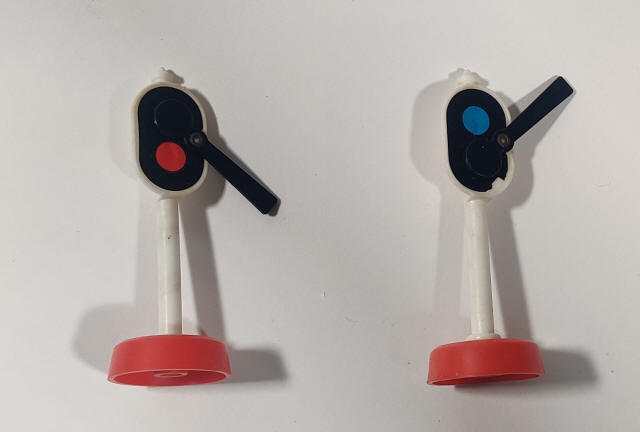 |
| 1 | Line of trees |
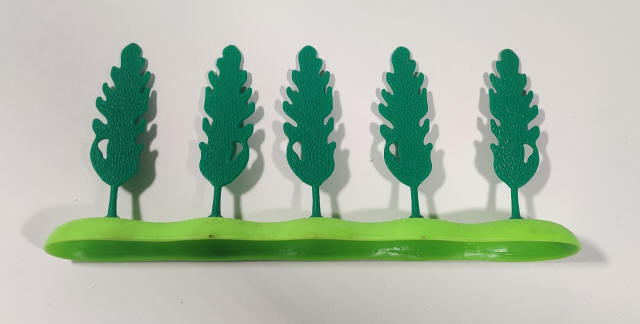 |
| 6 | Catenary |
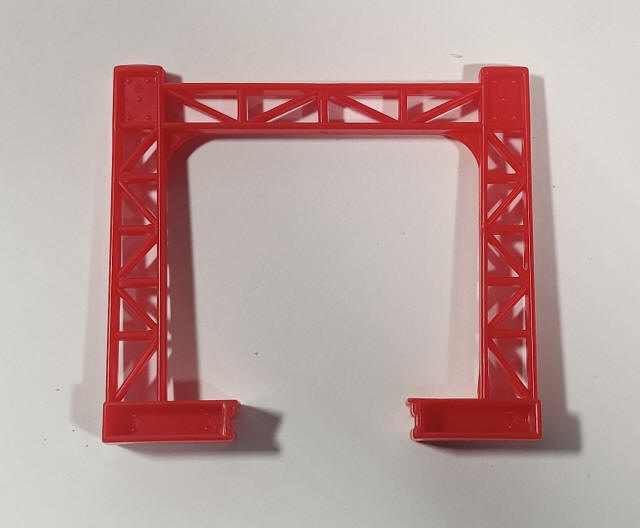 |
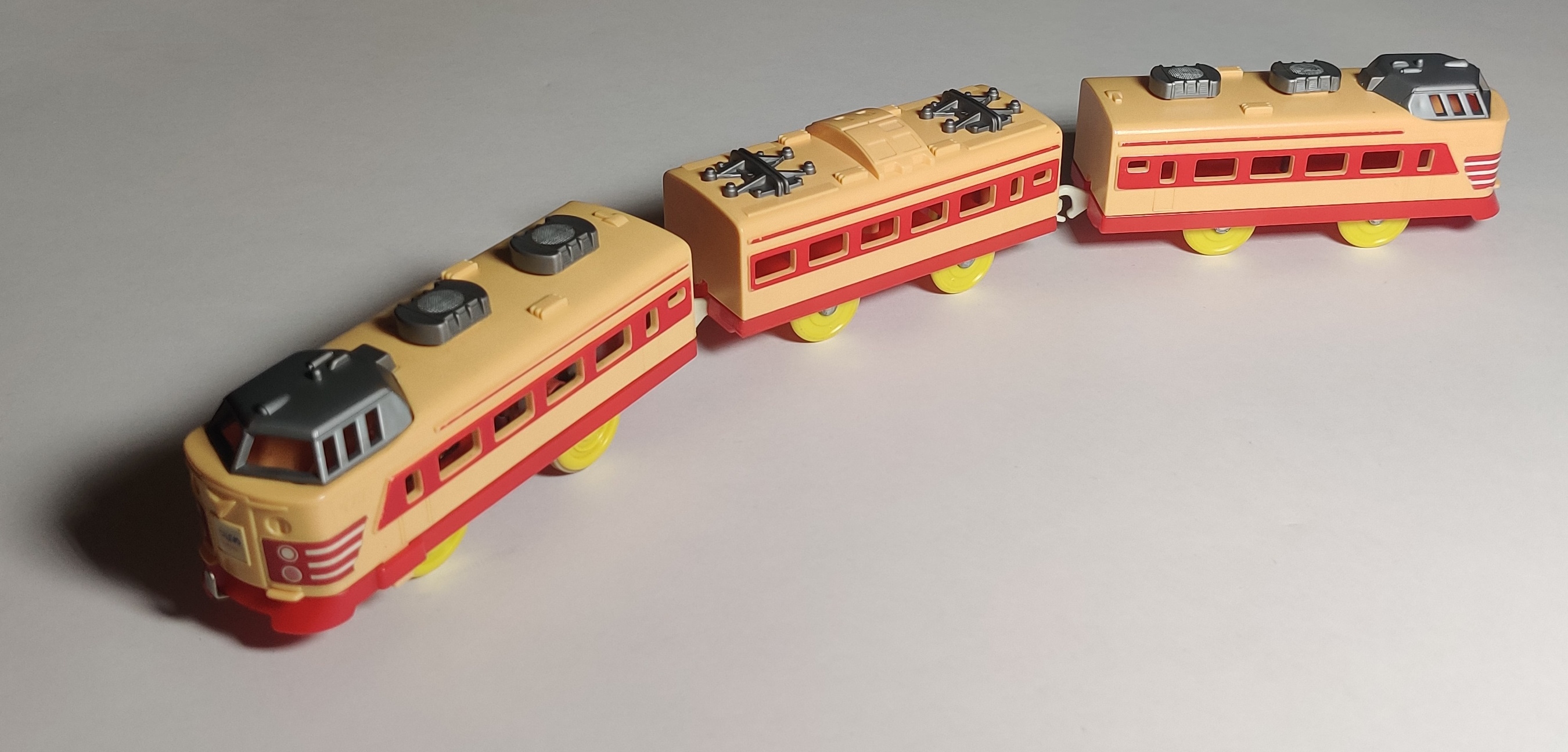
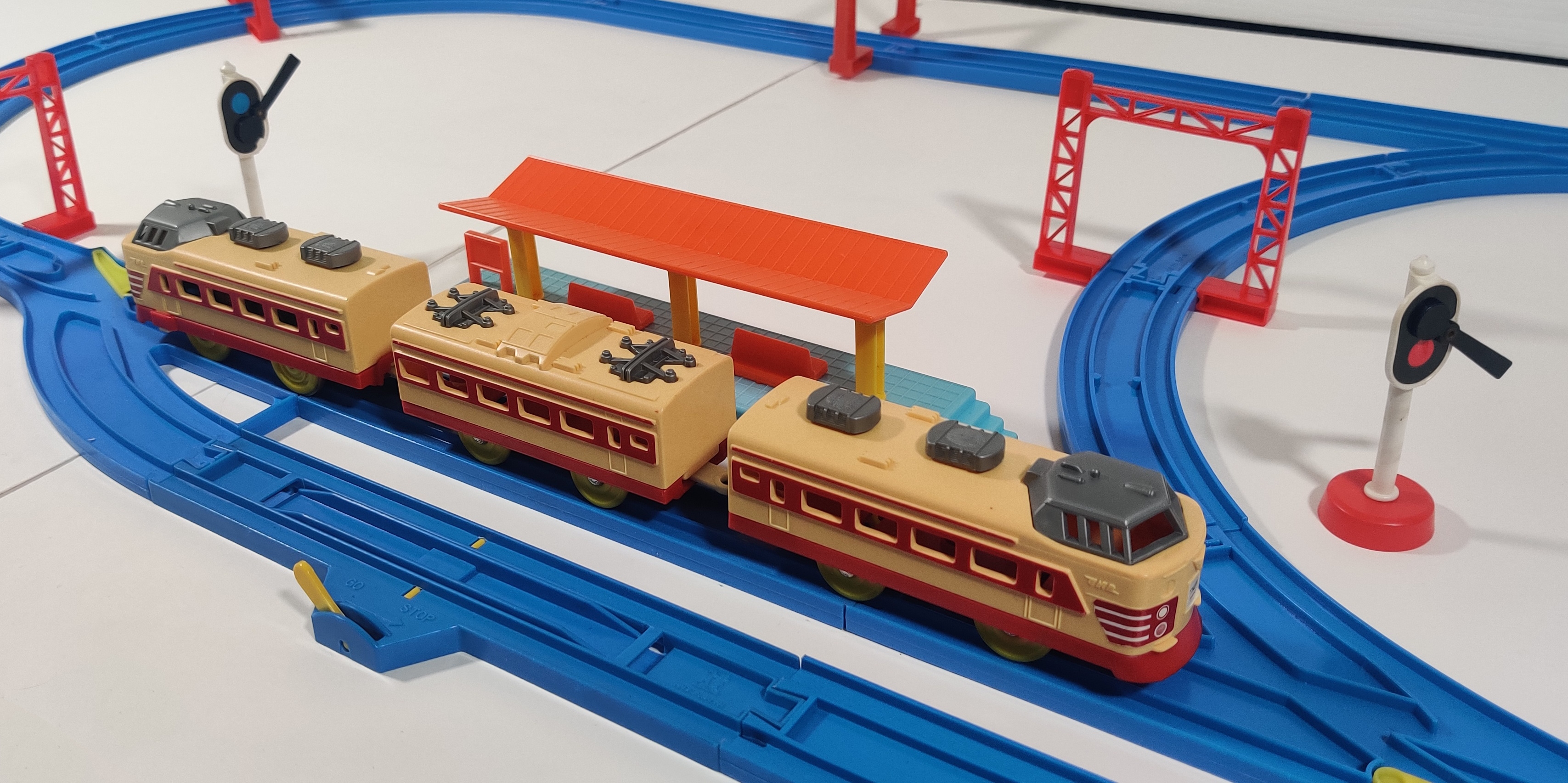
The L Limited Express was the name given to some limited express trains run by JNR beginning in 1972. By the late 1970s more than 30 Limited Express services ran across Japan, but as the Shinkansen and regular express services expanded in the 1990s the difference between L Limited and regular express trains diminished, and in 2002 JR East began rescheduling L Limited trains as Limited Express trains, with other companies phasing out the L Limited name over the next 15 years. The Plarail L Limited Express was first released individually in 1976. The entire train is very nicely molded with separately fitted silvery-grey pantographs, vents, and cabs. The use of stickers is simple but very effective. End cars of the train have つばめ stickers and "Tubame," presumably an odd Romanization of tsubame, on the front.
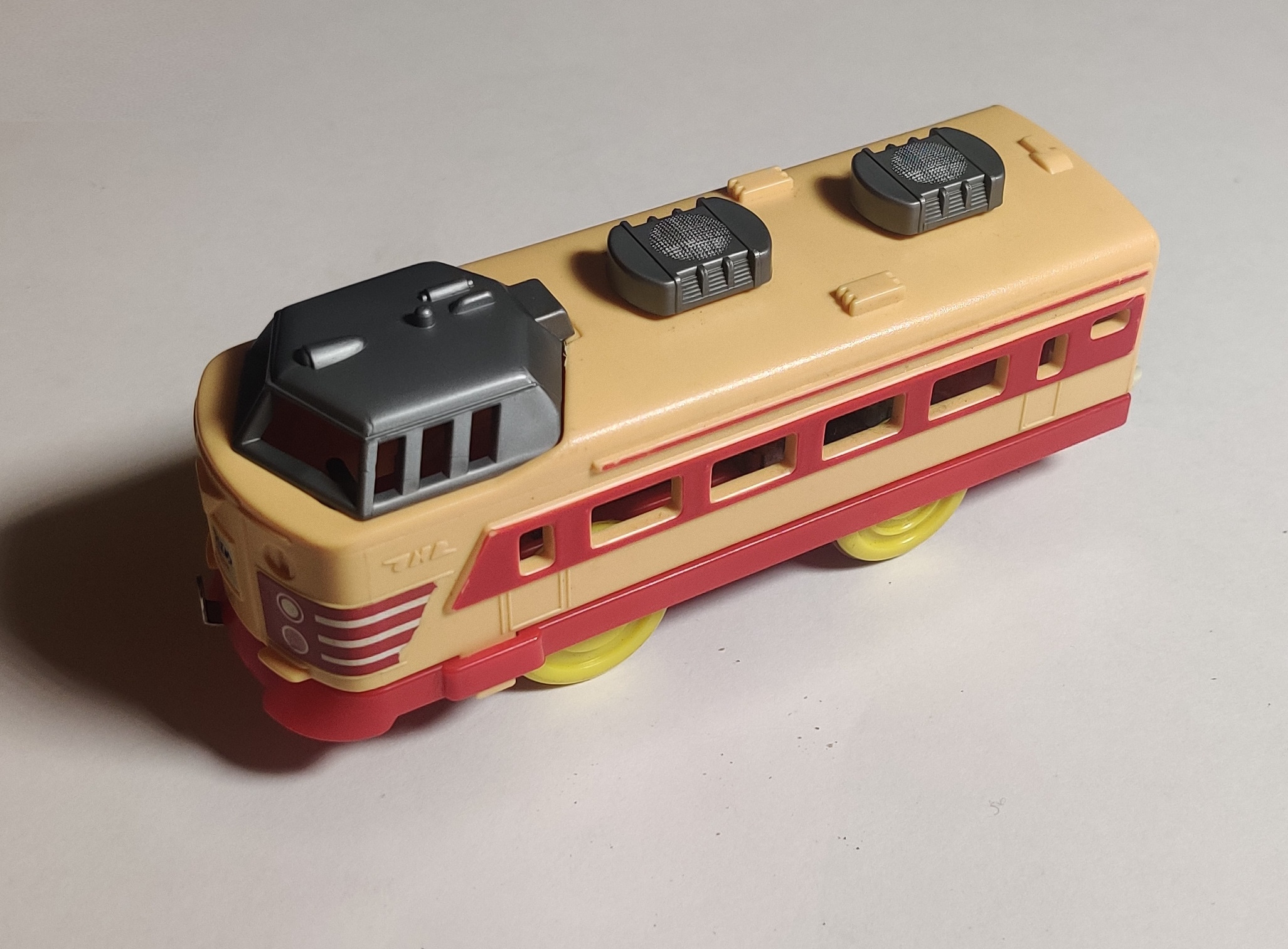
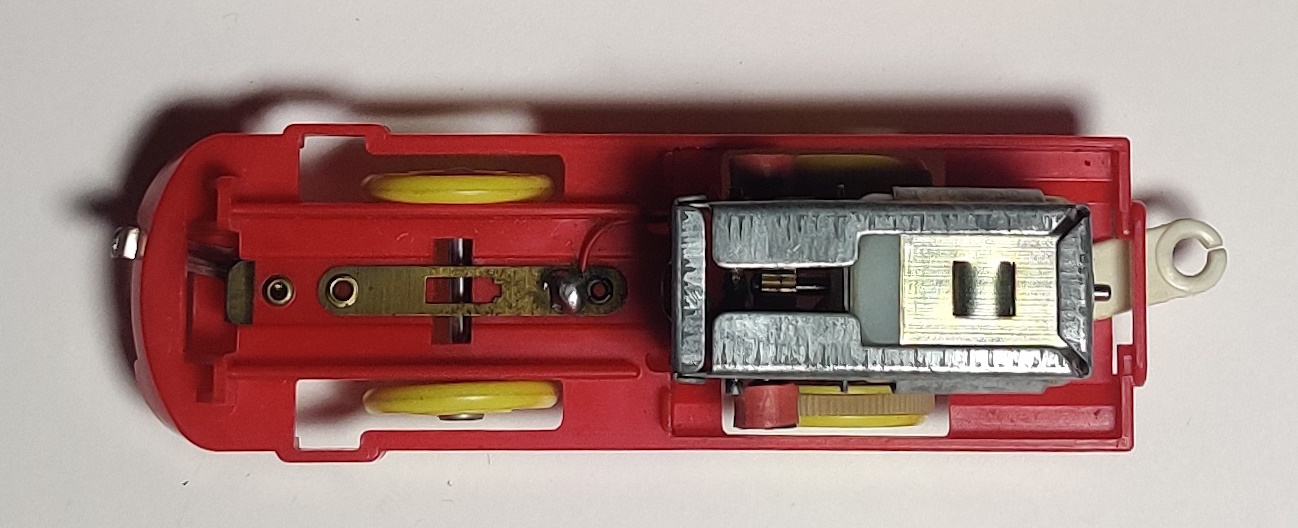
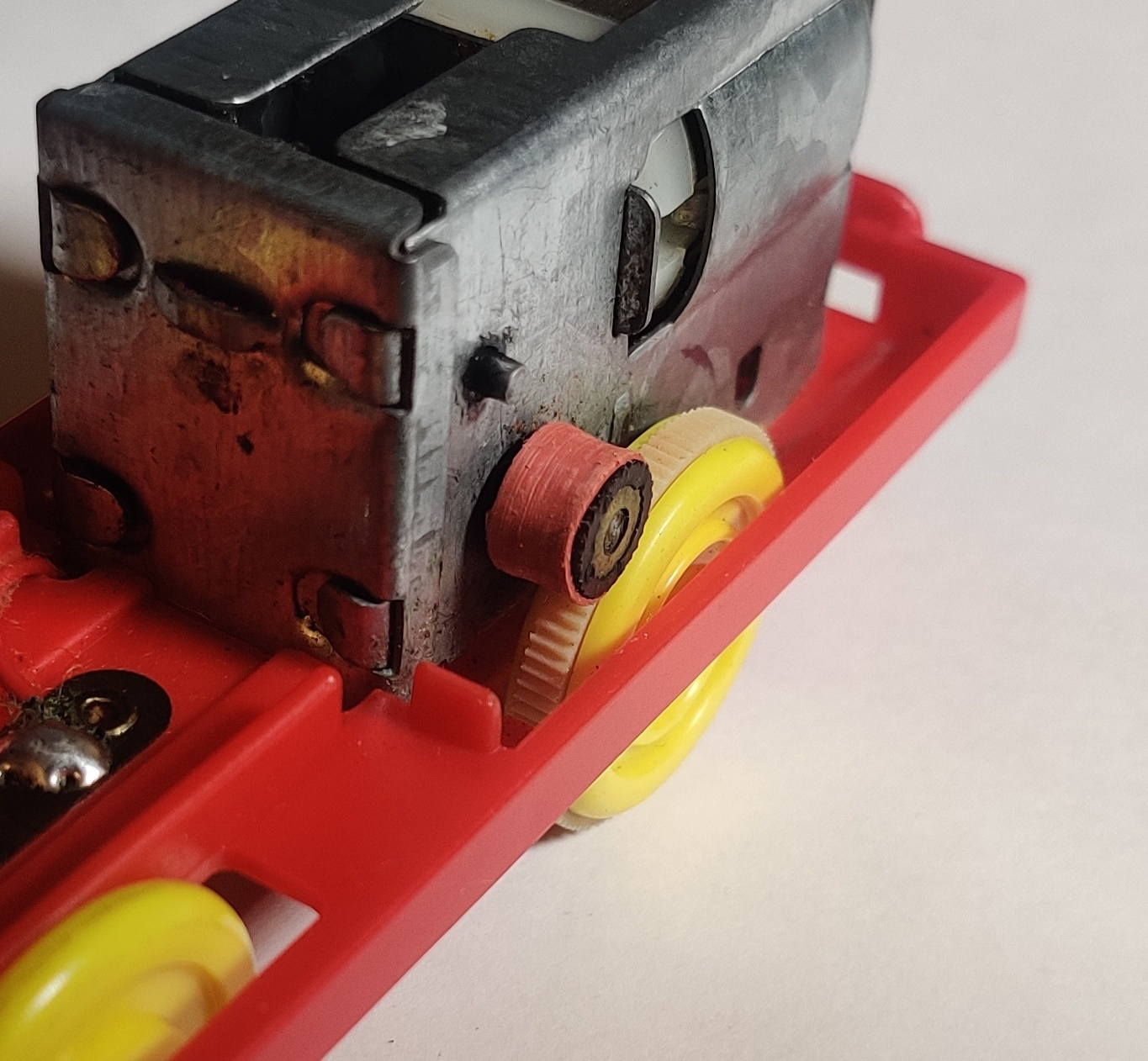
The power car uses the metal rim-drive gearbox of the older rim-drive era with a front power switch that is bent up nicely to hug the front of the chassis. The original rim-drive tires were intact but dry rotted and wrapping them in a layer of heat-shrink tubing as well as replacing the wheel's tires got the engine running nicely again.
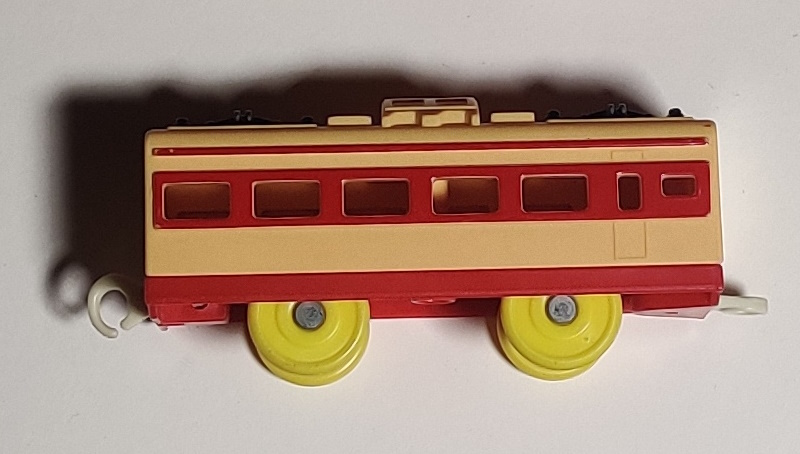
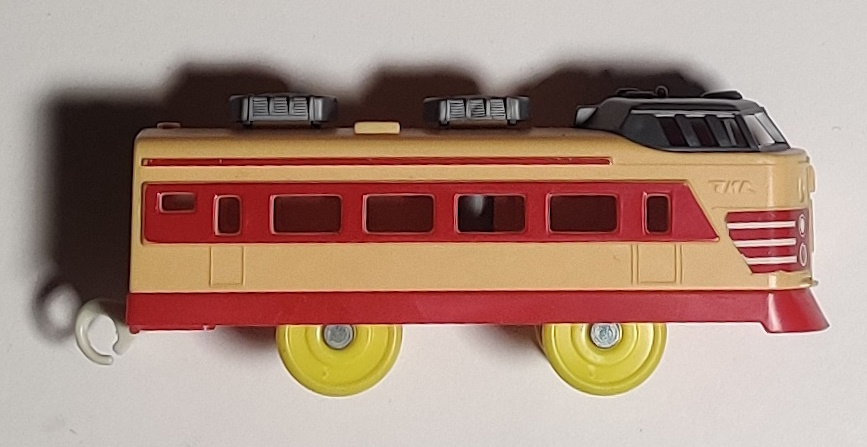
By this time in the later 70s the nearly-modern version of the coupling system with only a split in the outer rim of the loop coupling was in use while the wheel supports remained the relatively fragile type. This 1977 example uses the more fragile type of chassis design.
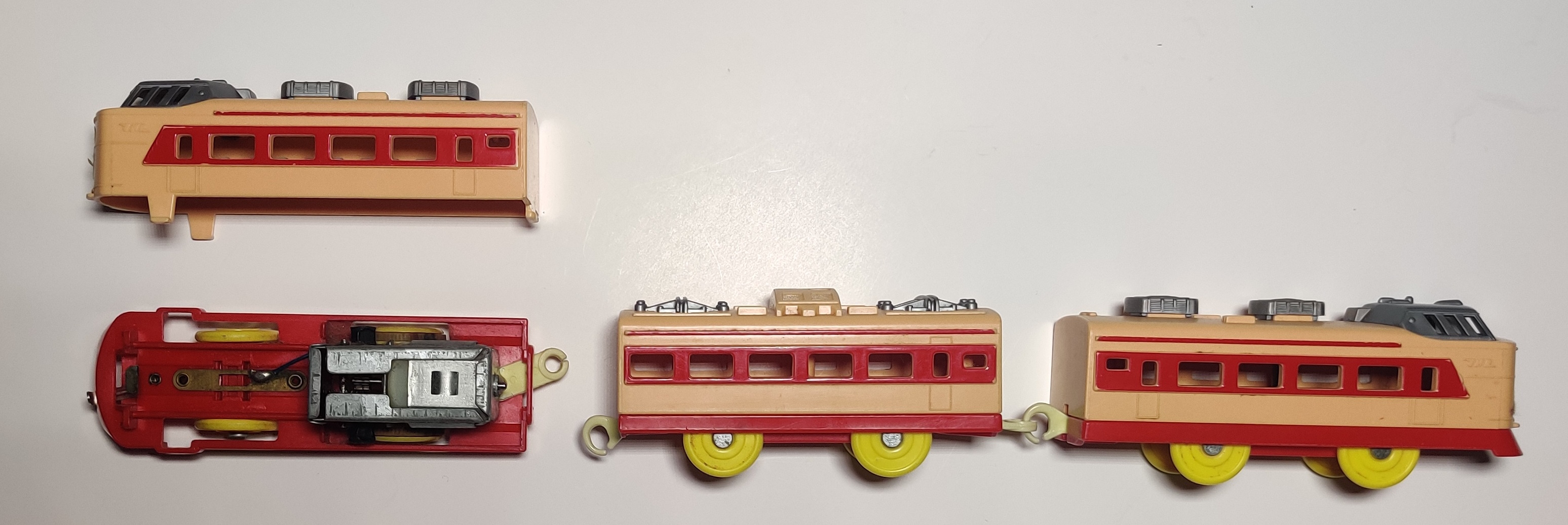
In addition to the 1977 production metal gearbox power car with old chassis cars, I also have a later metal gearbox power car with new "insert" chassis style cars from a set circa 1980 or so. In the early 1980s the L Limited would be updated to use the plastic rim-drive gearbox.
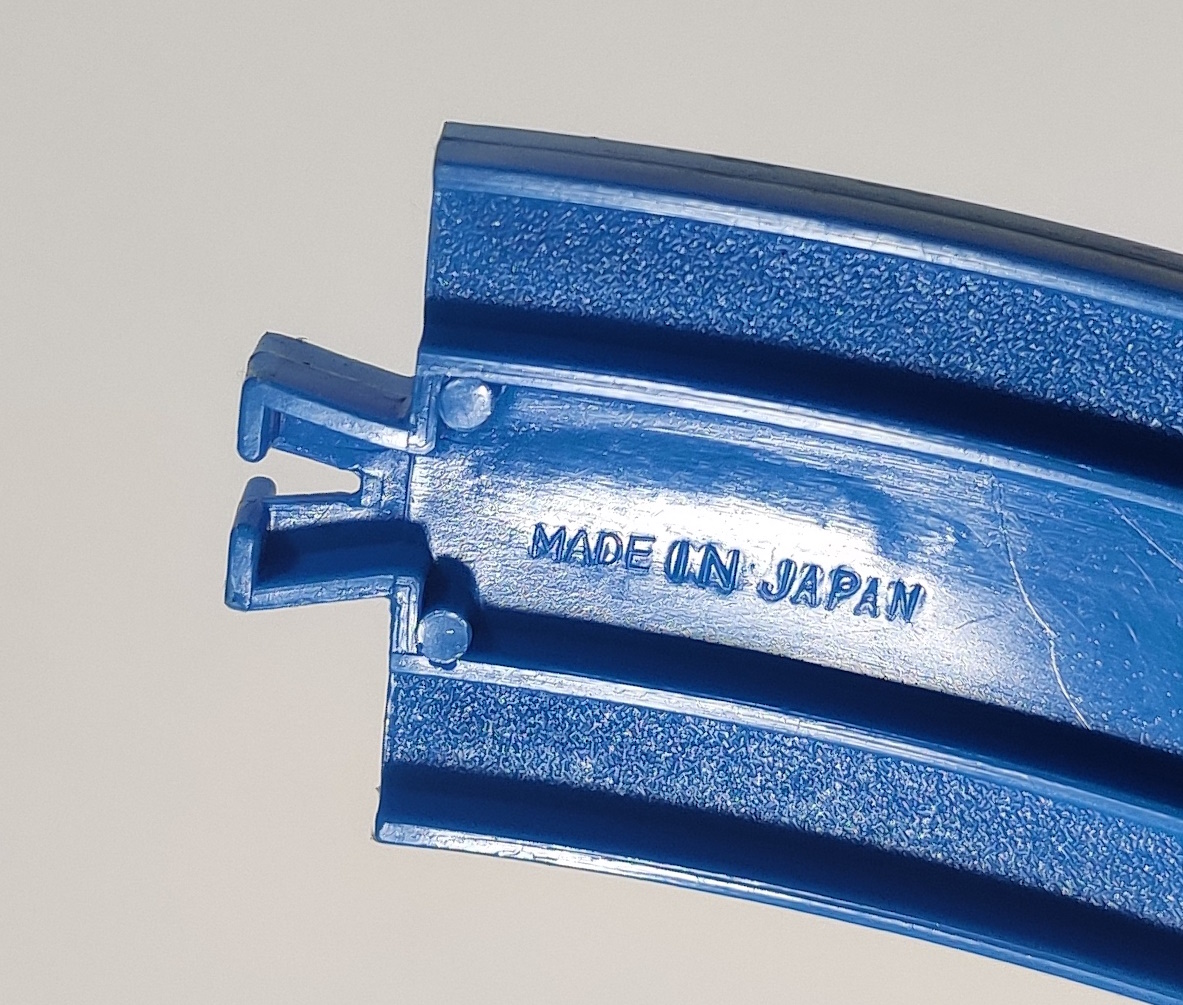
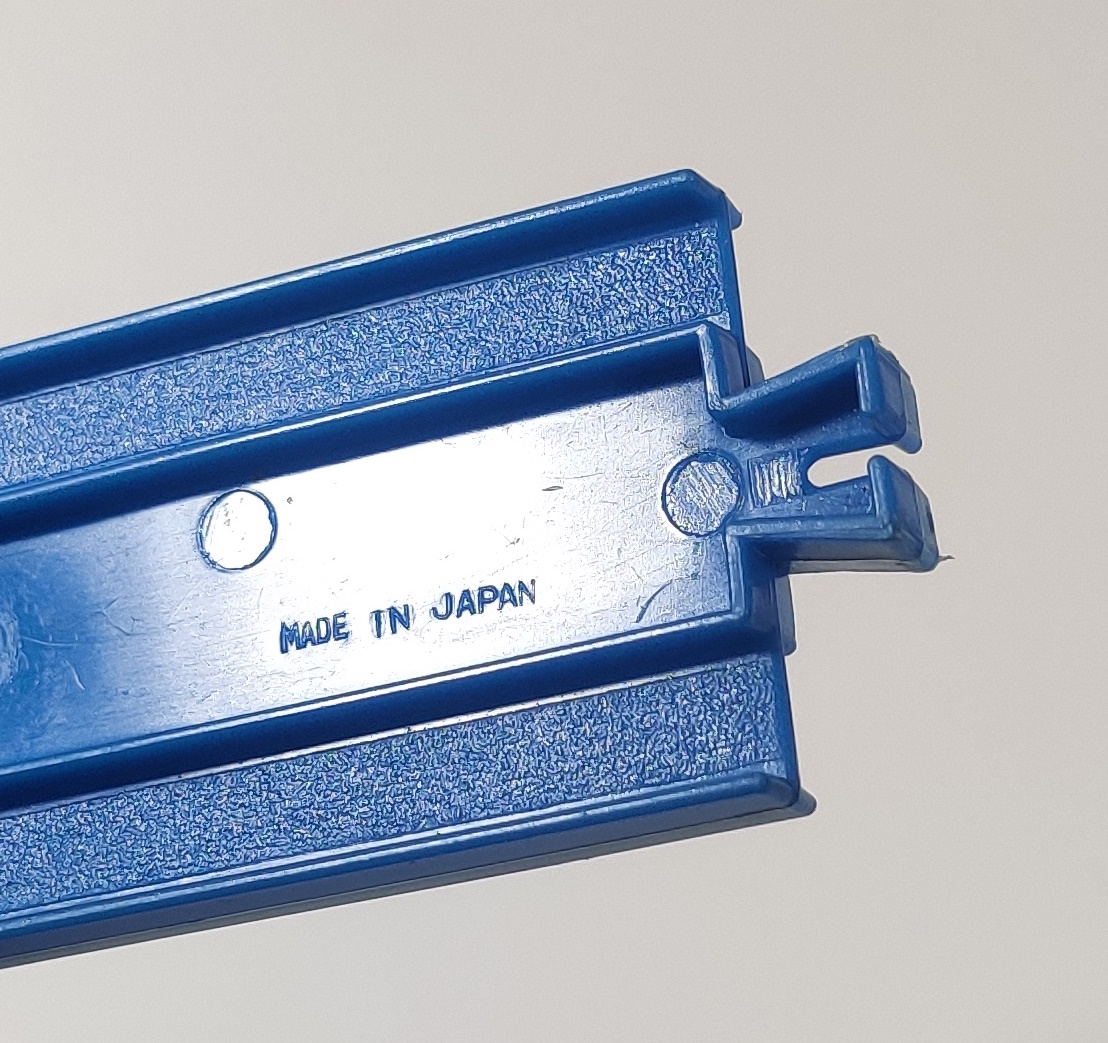
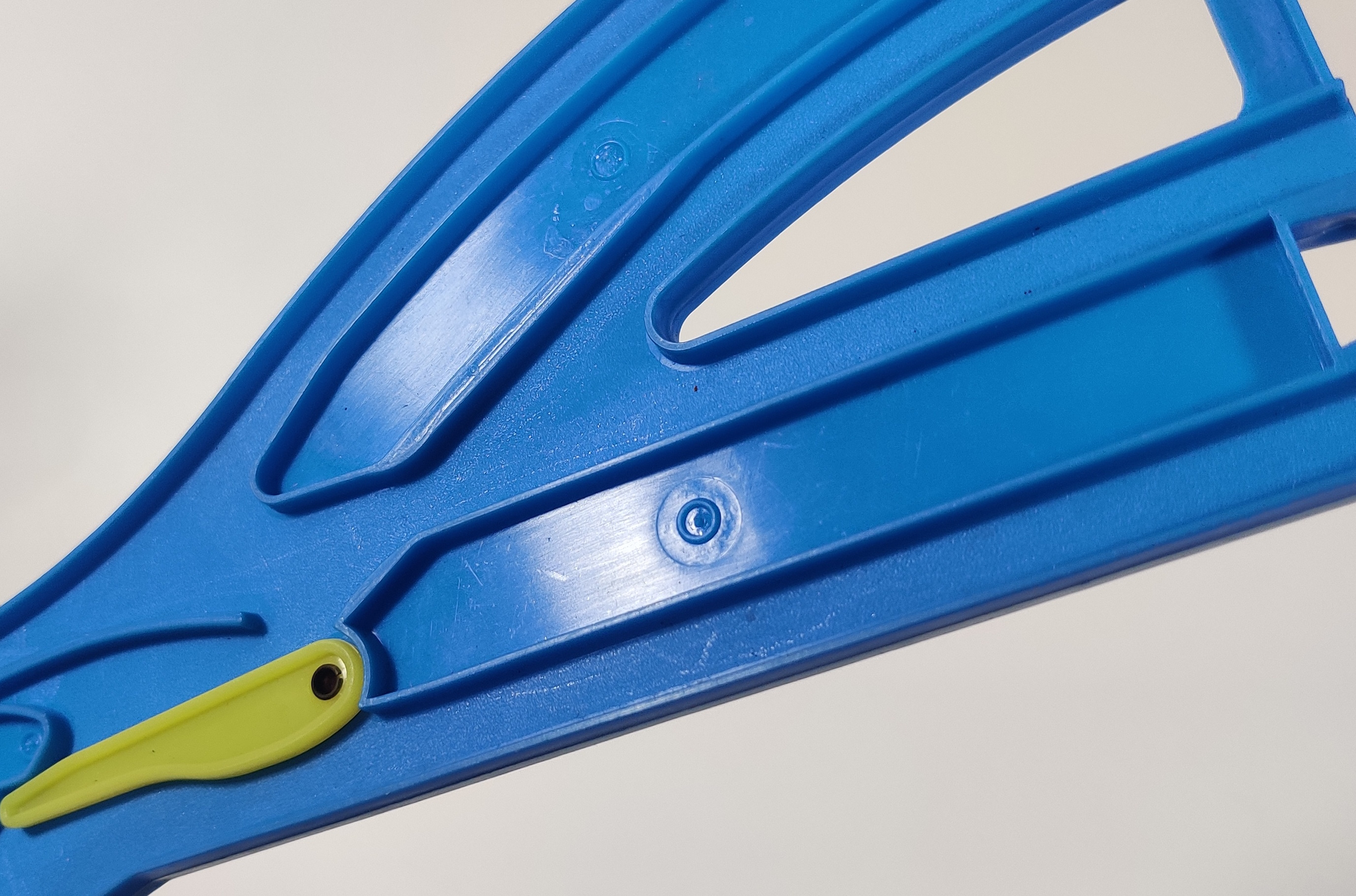
All rails in this set were manufactured in Japan and are of the roughtop variety except for the stop rail, which is a completely smooth older "thin" stop rail. The single/double point rails do not have any text markings on the 1977 issue but have JAPAN text on the later 1980 reprint. Levers on turnouts are the older more translucent style and the single/double points have riveted levers.
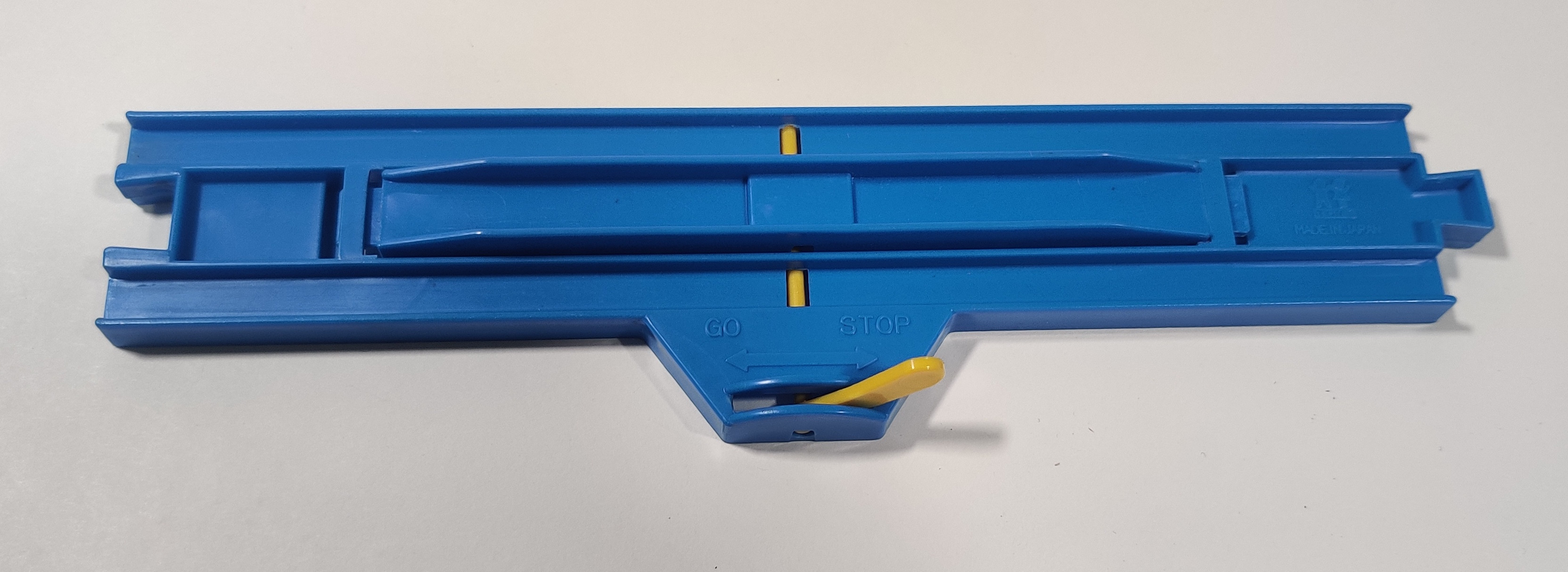
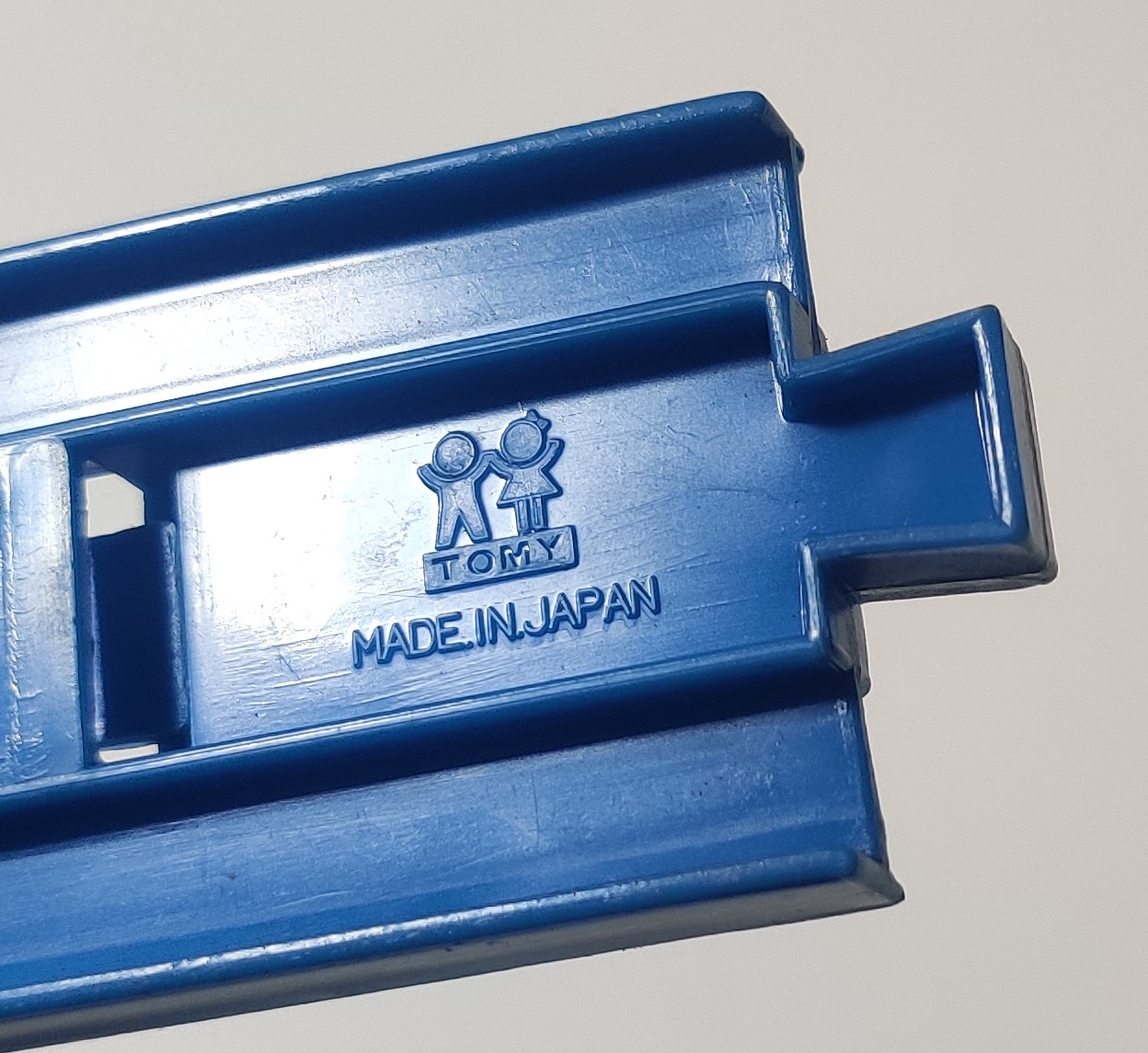

The 1977 release of the set uses the older all-smooth stop rail while the 1980 version uses the smooth-railed serrated-stopper type.
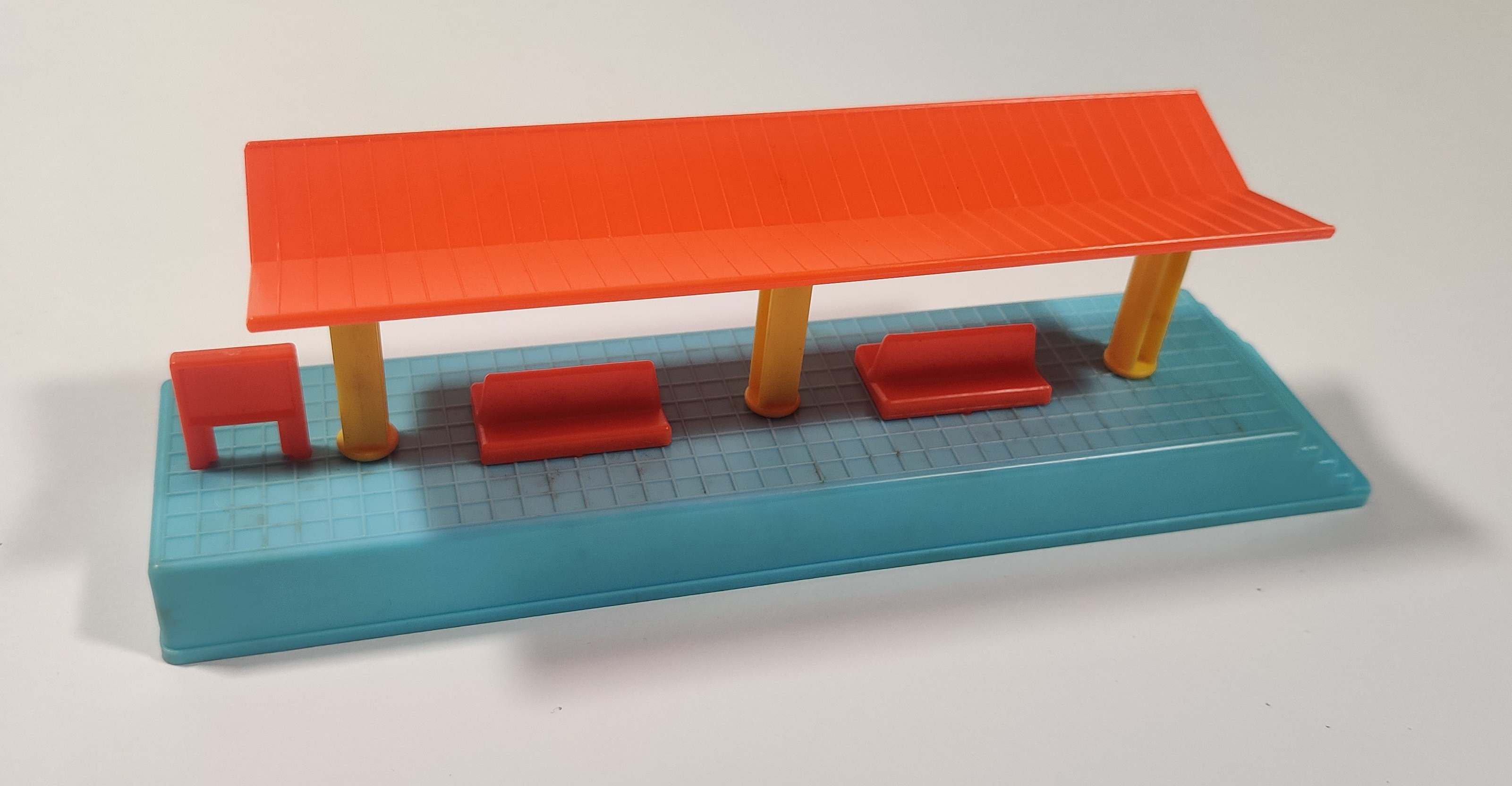
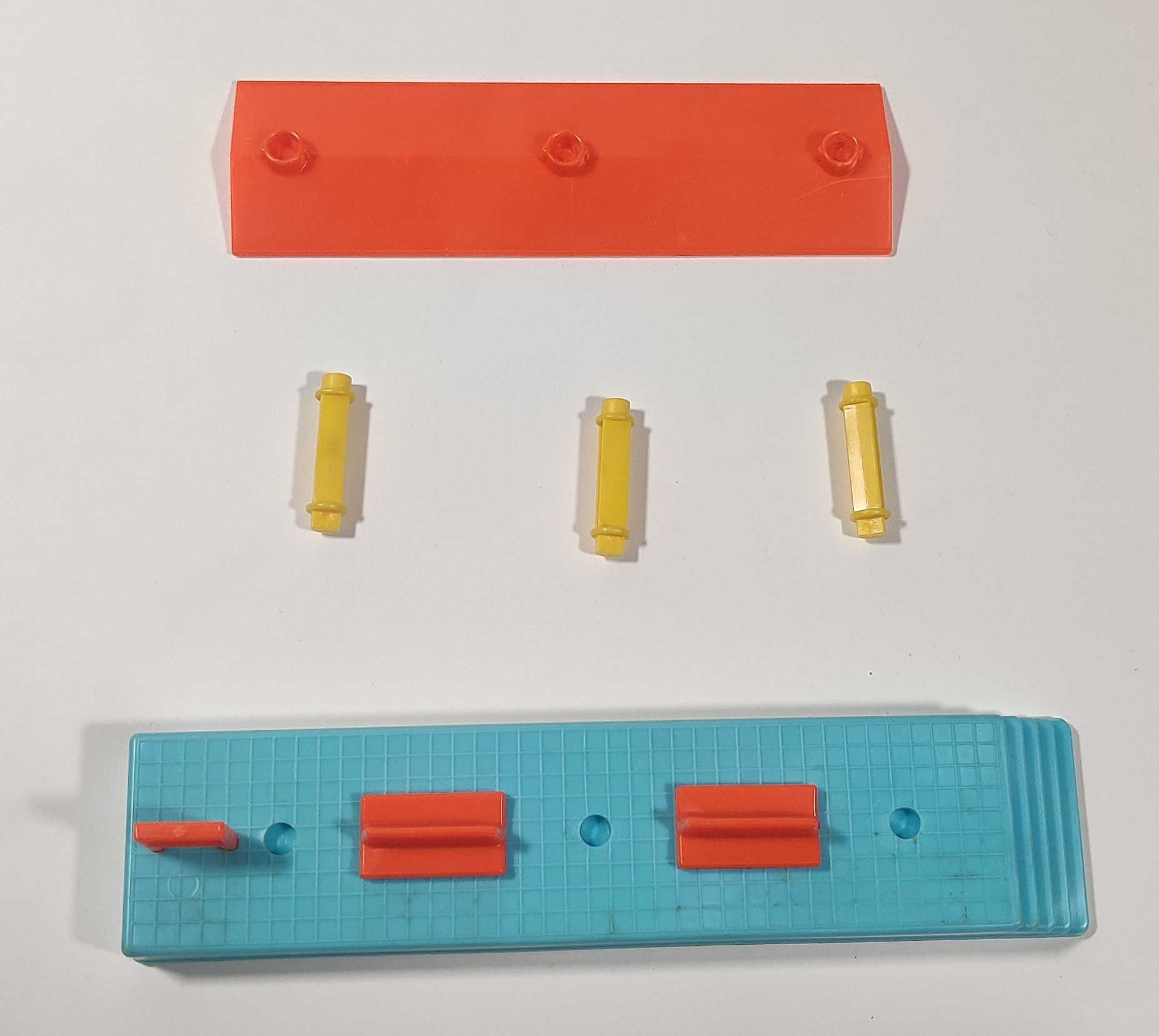
This Station was released in sets and individually in several variations. The version in this set has a blue station platform, orange benches, sign, and roof, and yellow roof supports. This style of station eventually evolved into the 1980s Elevated Station.
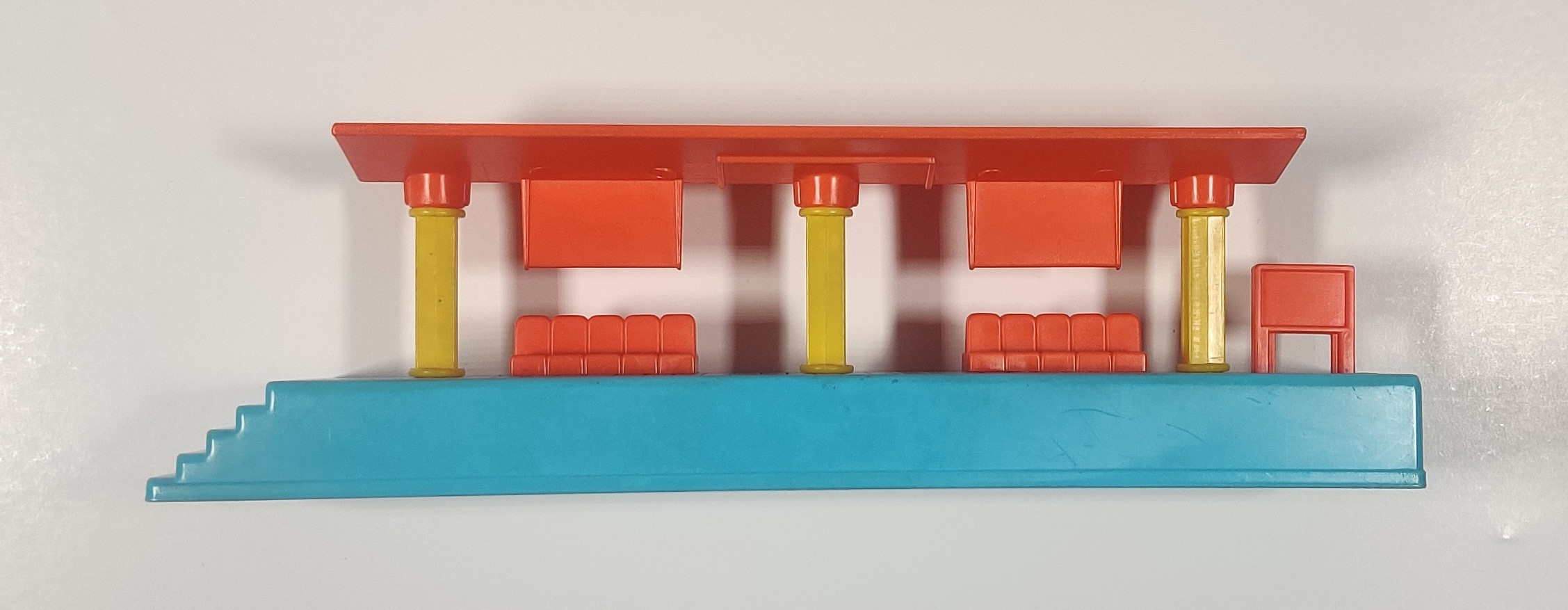
The later ~1980 copy of the set I have uses the updated roof tooling with the provisions for the kiosk in the Station Platform version. Because these toolings were shared, later production regular Stations have the hanging sign boards and rectangular support in the roof.
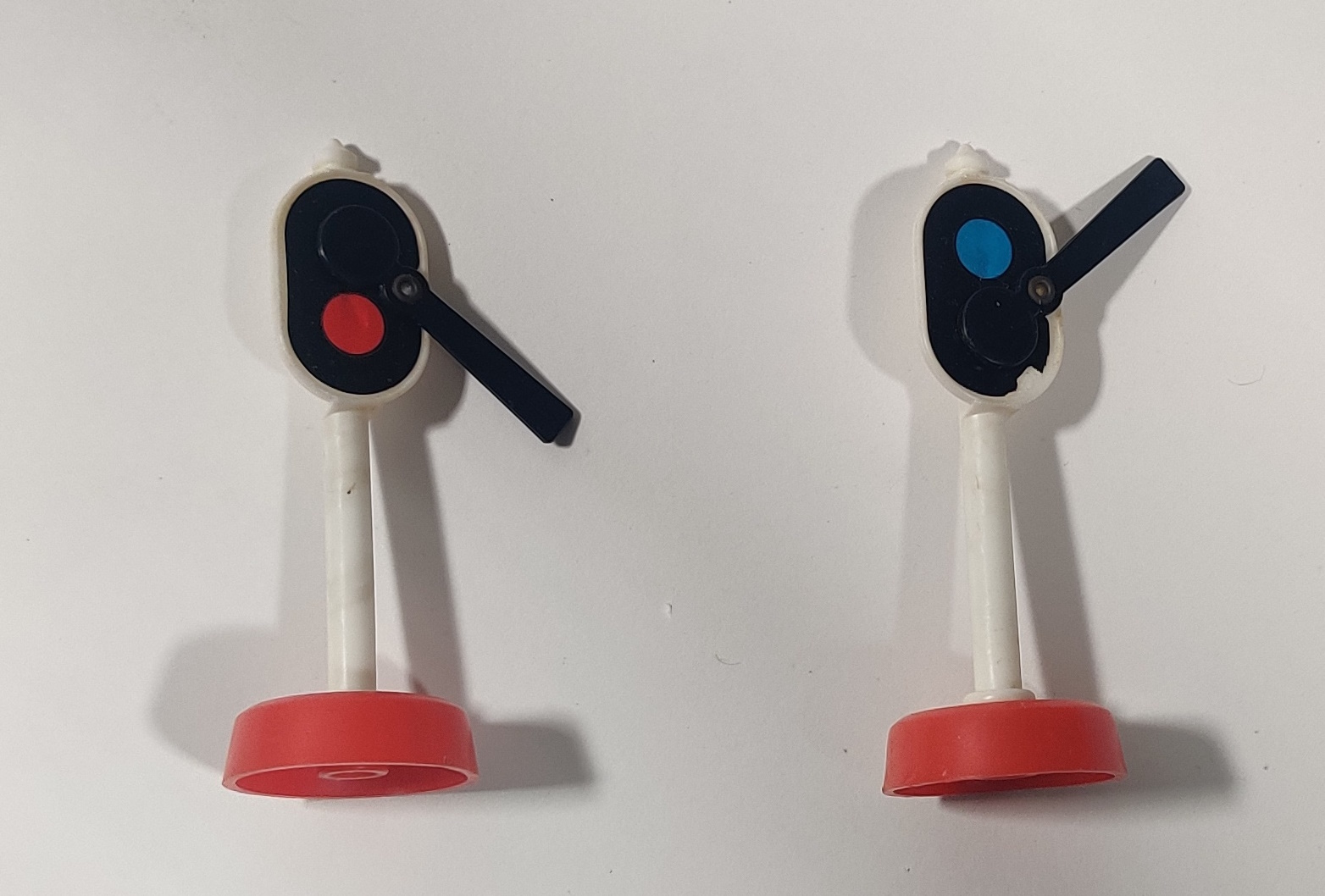
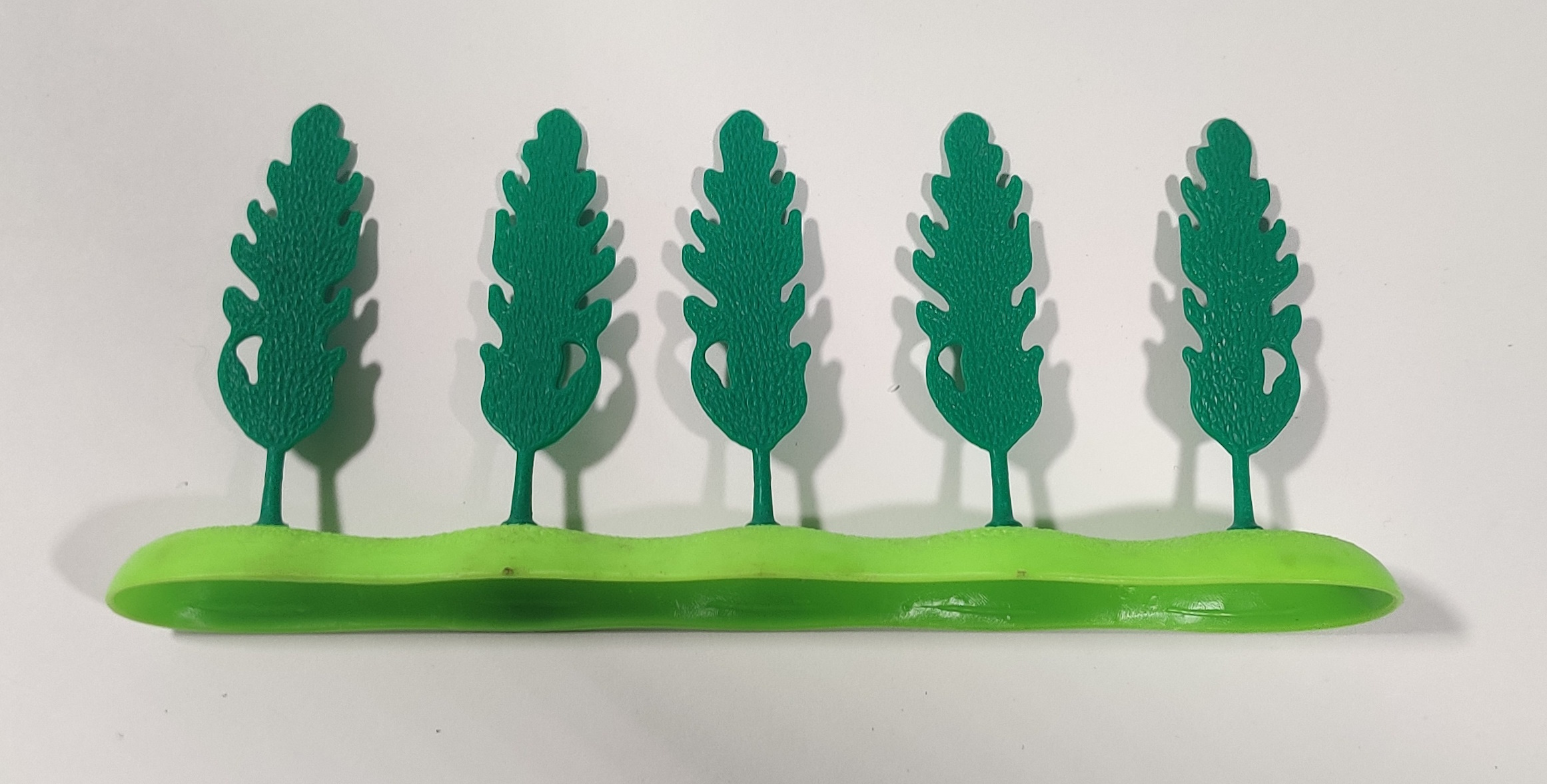
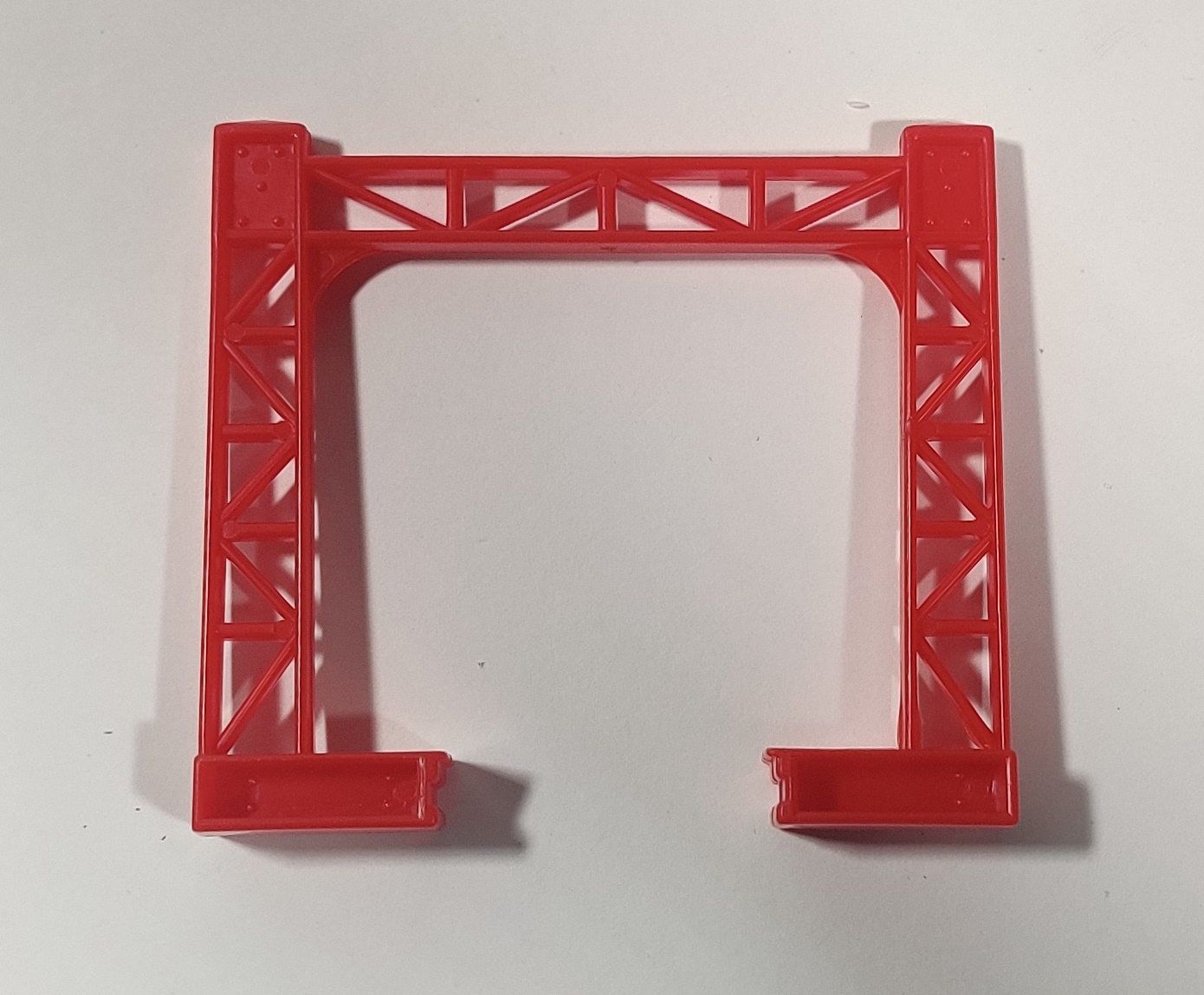
The signals are somewhat early examples of the "new" white plastic and stickered sign with riveted arm and Japan molded into the red base. The line of trees was a less common accessory and features five of the long-used flattish tree molding melted into its plastic base. The bottom of the base is marked Japan. Six electrical catenary with no country of manufacture markings fill out the included layout nicely.
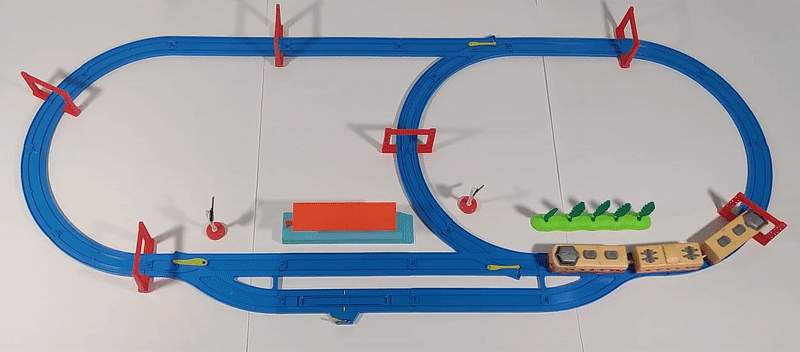
Click for longer video with sound
The No.3 set was the largest of the "basic" numbered sets and features the largest and most fully-featured layout. The core of the layout is similar to the oval with passing loop No.2 set layout used in many sets but with the addition of a section of double rail by the station.
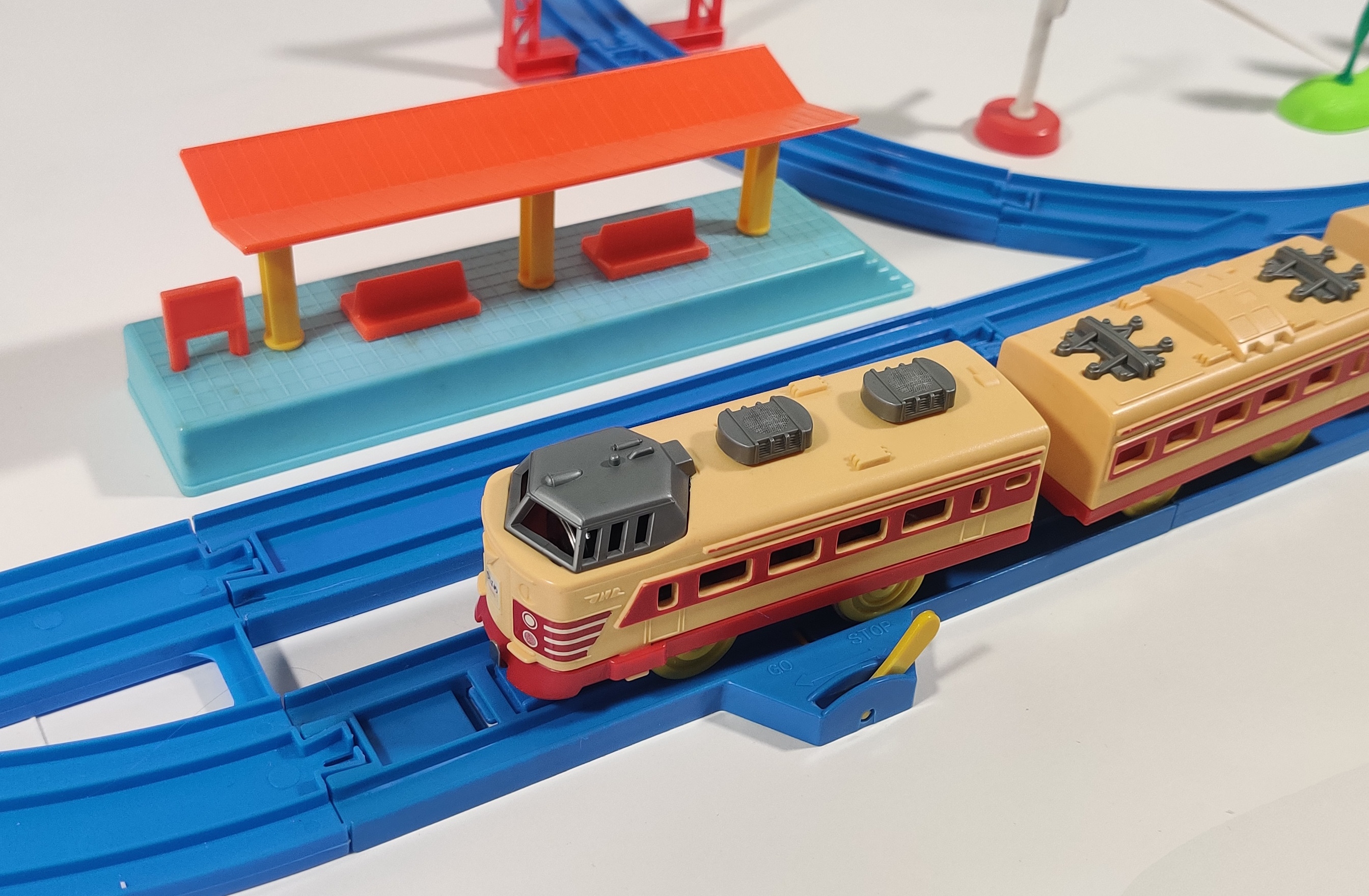
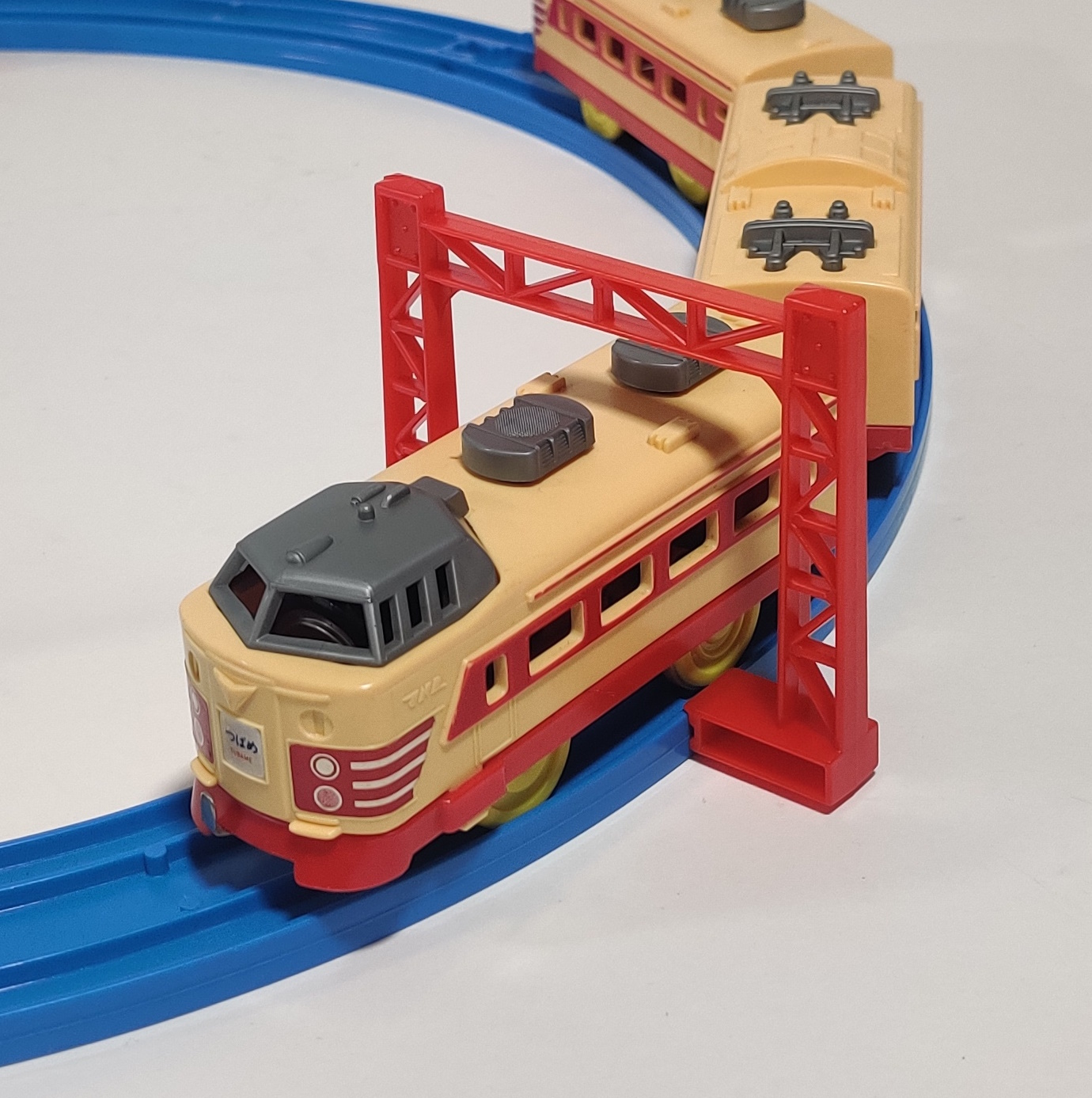
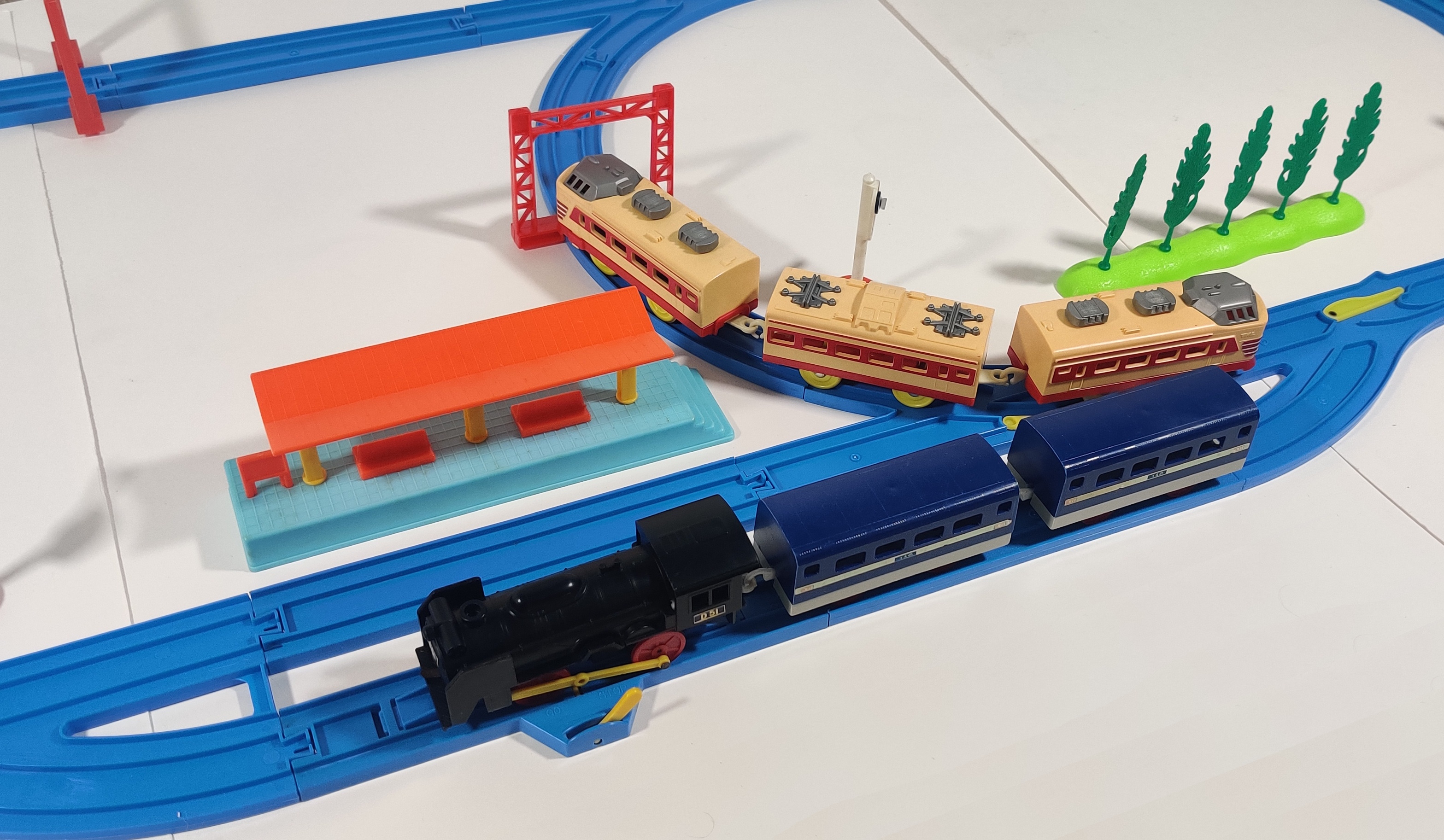
The L Limited molding is detailed and fits the aesthetic of this era of Plarail very nicely. I really love the way Tomy leveraged the molding capabilities of the time with effective paint application and use of stickers, the headlights fit in well with the red paint. It just looks wonderful going under the catenaries with the bent front power switch sticking out the front. The set is a good size for a "basic" set and has a decent assortment of common accessories and the recently released L Limited at the height of L Limited service was a nice choice for inclusion in a set. The added track along the station makes it very easy to expand the set with any normal three-car release.
| Set name | Basic No.3 Set 基本No.3 セット |
Release period | 1977-~1982 |
| Train rating |
    
| Track rating |
     |
| Accessory rating |
     | Overall |
     |
| Notes: |